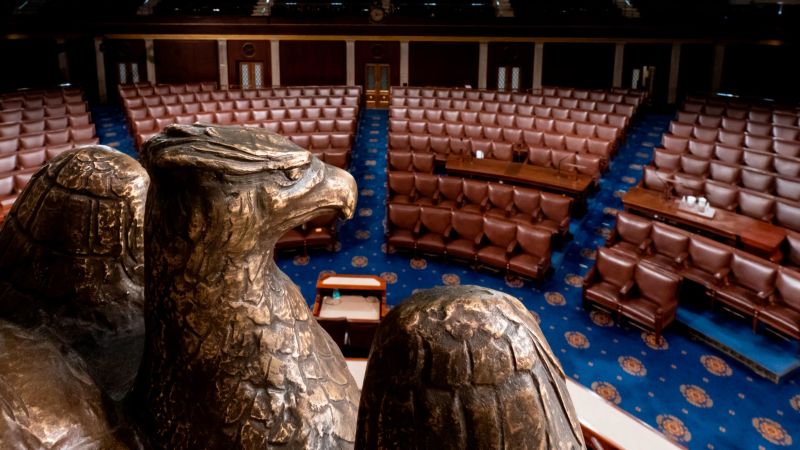A version of this story appeared in CNN’s What Matters newsletter. To get it in your inbox, sign up for free here.
CNN
—
Rep. Kevin McCarthy has a math problem, and he has to solve it by January 3.
His problem is that he’s got the support of a majority of Republicans to be the GOP leader, but not enough votes to become House speaker, the position he has long sought.
Congress can’t really function until it has a House speaker; the position is filled on the first day of a new Congress, January 3, even before members-elect take the oath of office.
What’s standing between McCarthy and the speaker of the House position is a handful of conservative lawmakers. These conservatives, many members of the Freedom Caucus, don’t trust McCarthy and have not yet been convinced by him or those lobbying on his behalf, including former President Donald Trump, that McCarthy will appropriately stand up to Democrats and President Joe Biden.
Republicans will only have a slim majority – 222 Republicans compared with 212 Democrats – which means McCarthy can’t afford many defections if he is to find the 218 votes needed to make him speaker of the House.
On January 3, when the new Congress assembles, it establishes a quorum, and then its first action will be a roll call vote to elect a new speaker.
Not until after this election does the House get down to business.
There’s no rule that the speaker is a House member. Members can vote for anyone, and they can protest by skipping the vote or voting “present.” The vast majority will vote for their party’s leader.
Republicans have already agreed to nominate McCarthy, and Democrats will nominate their incoming leader, Rep. Hakeem Jeffries.
McCarthy also faces a long-shot challenger: hard-right Republican Rep. Andy Biggs of Arizona. The challenge highlights the opposition McCarthy is up against and could draw votes away from him.
Lawmakers will continue voting until someone wins the majority. They can take successive votes on January 3. They can adjourn to horse trade and deal among themselves. But the House does not kick off the new Congress until a speaker is elected.
This is what people are talking about when they refer to a “floor fight.” It’s when House members require multiple ballots, or votes, to elect their speaker.

In the 200-plus years since the first two-year Congress met in 1789, such floor fights have occurred just 14 times, according to the House historian.
All but one of those multi-ballot speaker elections took place before the Civil War as the two-party system was evolving. Back then, floor fights were routine.
A floor fight has only taken place once since the Civil War, exactly 100 years ago, when it took nine ballots for Rep. Frederick Gillett of Massachusetts to be elected speaker in 1923.
Politico notes it’s been so long that the exact procedure if no one has a majority is a smidge unclear. A Congressional Research Service brief on electing the speaker simply says that if no one gets a majority, the vote is repeated.
Way back in 1849, the House had been in session so long without being able to elect a speaker – 19 days – that members voted to elect their speaker with a plurality rather than a majority. Members ultimately confirmed the plurality election with a majority vote.
In 1855 and 1856, it took 133 separate votes for Rep. Nathaniel Banks of Massachusetts to be elected, again by a plurality and not a majority.
The process stretched over more than a month and included a sort of inquisition on the House floor of the three contenders. They answered questions about their view of the expansion of slavery. Read more from the House historian’s website.
It’s also interesting to read about Banks; his official House biography notes he was elected to office as a Republican, an independent, a member of the America Party and as a Democrat.
One important thing to remember is that McCarthy does not technically need 218 votes to become speaker. A majority of those present and voting is required to get the speakership, which is usually 218 lawmakers. But if enough people skip the vote or vote “present,” the number of votes required for a majority can drop.
House Speaker Nancy Pelosi was elected with 216 votes in 2021.
Former Speaker John Boehner won reelection to the post with 216 votes in 2015 after beating back a conservative rebellion like the one McCarthy is dealing with now.
Most of the negotiation and arm-twisting happens long before the floor vote. Pelosi got 220 votes in 2019 after turning most of the fellow Democrats who opposed her. She did so by agreeing to serve only another few years as speaker, a pledge she kept by announcing her decision in November to not seek reelection for leadership.
Conservatives who oppose McCarthy have said they want to reinstate a dormant and arcane power to allow any member to call for a vote to remove the speaker at any time. Read more about the “motion to vacate.”
Republicans who oppose McCarthy see it as a tool for accountability. McCarthy and his allies see it as a recipe for bad governance if he is constantly at risk of losing the post that’s so difficult for him to attain.
This story has been updated with additional information.

